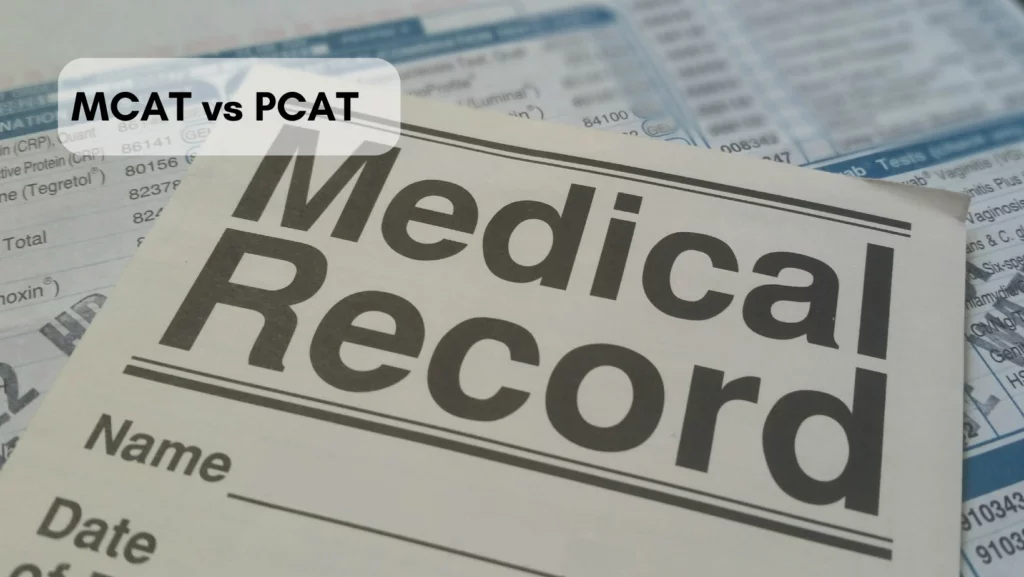The American Association of Colleges of Pharmacy recently announced that it would retire the PCAT in 2024. The decision to scrap the entry-level exam has stirred a debate on the MCAT vs PCAT, with many students questioning the validity of both exams. Our exam experts clear the air on the raging debate and provide insights on the differences between the two exams. They explain what they are, how they compare, and recommend the most appropriate test for aspiring medical students. If you need help in understanding and doing the exam, contact our customer service who will link you to one of our medical exam experts for assistance.
The Main Differences Between the MCAT vs PCAT
Students pursuing medical careers debate whether to take the MCAT vs PCAT as the preferred entry-level medical test. The following differences between the MCAT vs PCAT paint a clear picture of the exam students should take based on their area of specialization:
MCAT vs PCAT: Origin and Purpose
The medical college admissions test (MCAT) is a standardized entry-level exam set by the Association of American Medical Colleges (AAMC). It aims to determine medical students’ eligibility for admission into medical programs across institutions of higher learning in the U.S., Canada, Australia, and the Caribbean Islands. Conversely, the AACP administers the Pharmacy College Admission Test (PCAT) through the Pearson VUE Division. It measures the academic aptitude of students looking to pursue pharmacy courses at select registered pharmacy colleges in North America and Canada.
Exam Format
The MCAT has 230 multiple-choice questions that test pre-med students’ knowledge of science-related subjects and medical principles. These questions are in the following four key sections:
- Biochemical and Biological Foundations of Living Organisms (44-passage and 15 standalone questions)
- Psychological, Biological, and Social Behavior Foundations (44-passage and 15 standalone questions)
- Physical and Chemical Foundations of Biological Systems (44-passage and 15 standalone questions)
- Critical Analysis and Social Reasoning (CARS) (53 passage questions)
Conversely, the PCAT has a total of 192 multiple-choice questions divided across the following sections:
- Biology processes (48 multiple-choice questions)
- Chemistry processes (48 multiple-choice questions)
- Reading comprehension (48 multiple-choice questions)
- Quantitative reasoning (28 multiple-choice questions)
The PCAT also has a mandatory unscored essay writing question, bringing the total examined sections to five.
Exam Length
The duration of the MCAT vs. PCAT varies due to the difference in complexities between the two entry-level exams. Typically, the MCAT takes approximately 7 hours and 33 minutes. Each section of the exam requires about 90 to 95 minutes, with an optional 30-minute break in the middle of the exam.
On the other hand, the PCAT takes about 3 hours and 40 minutes or 220 minutes. Sections on the PCAT have different time variations, as described below:
- Biology – 45 minutes
- Chemistry – 45 minutes
- Reading comprehension – 50 minutes
- Quantitative reasoning – 50 minutes
- Essay writing – 30 minutes
Students also get an additional 15-minute break during the exam.
Scoring Mechanism
The MCAT has a different scoring system from the PCAT. Each section of the MCAT is scored between 118 to 132 points. Examiners then aggregate these scores and create an overall MCAT score ranging from 472 points to 528 points. The final MCAT score gets a percentile rank based on the student’s performance in the exam.
For example, a final score of 450 and 500 points can be between the 30th and 50th percentile, depending on how well students perform.
In contrast, each section on the PCAT is separately scored and awarded a percentile mark. These scores are then scaled into a final score between 200 and 600 points. The initial PCAT scores are included in the preliminary report, while the final score (verified by Pearson) is on the Official Score Report.
Testing Dates
The timelines for taking the MCAT vs. PCAT differ annually. The MCAT has 35 testing dates from January to September. Slots during each testing time fill up quickly. On the other hand, there are no specific timelines for taking the PCAT. However, most openings usually arise during January, July, and September, while select locations also schedule the exam in February, October, and November.
Registration Requirements
While both entry-level exams accept online applications, the registration process for the MCAT vs. PCAT is quite different. To apply for the MCAT, students must create an account on the AAMC website and present the following documents:
- A valid government-issued ID with a clear photo or,
- Driver’s license
- Passport
- Green card
- Canadian health card
- Academic transcripts
Students must also pay the $325 minimum required fee during the application process.
For the PCAT, registration occurs via the pcatweb.info or Pearson VUE websites. After creating an account on either platform, students must submit the following documents:
- A primary ID, including government-issued ID, passport, military ID, alien registration card, and Canadian health card or,
- Secondary ID such as student ID, library card, or major debit or credit card
A fee of $210 is also required during the PCAT registration process.
MCAT vs PCAT: The Final Verdict
The MCAT vs PCAT debate has been a raging topic among prospective medical students. However, these tests differ in purpose, structure, length, scoring system, testing dates, and application process. Our exam help experts can help students study or take the MCAT and PCAT exams, ensuring they pass with flying colors.




